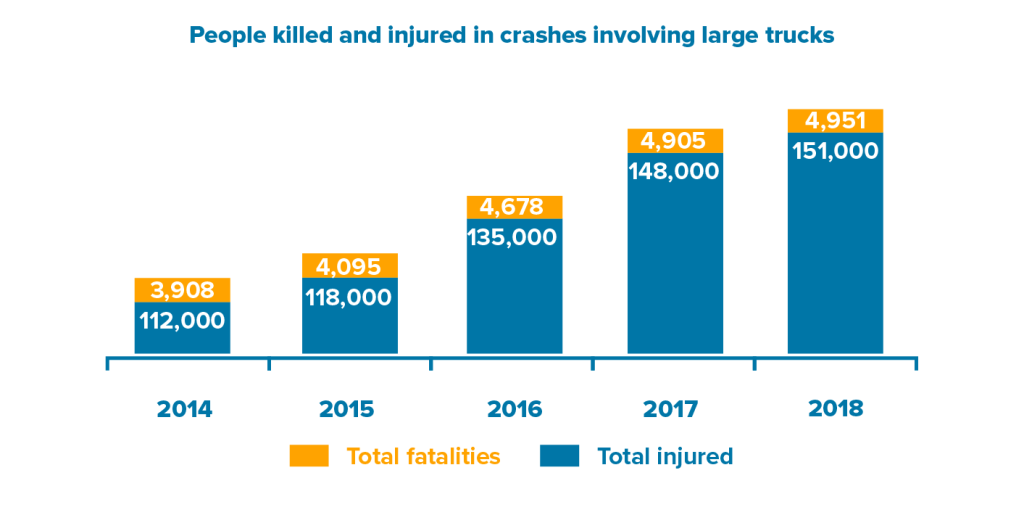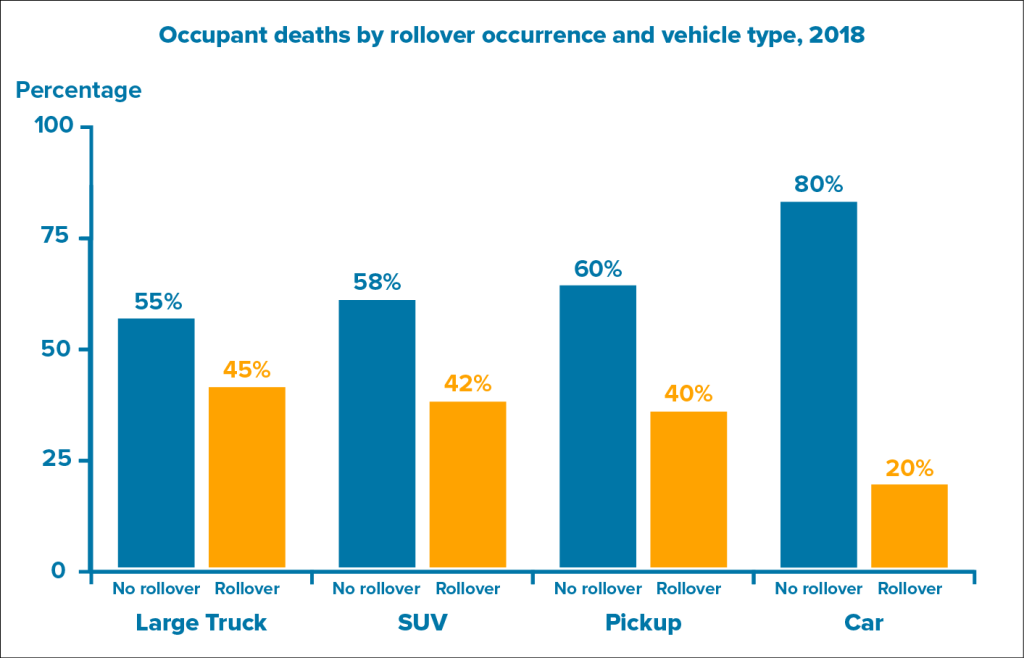Contact Hensley Legal Group today for a free conversation about your truck accident claim.
Injured in a Semi Truck Accident?
Hensley Legal Group is Here for You
Semi trucks After a Semi-Truck Accident happen.
Most semi-truck collisions end with devastating outcomes. When a semi-truck is involved, fault can apply to many parties including the truck driver’s company, the company they haul product for and even the person that sets up the load. With all of these parties potentially involved, you can expect the insurance companies to put up a good fight.

Navigating truck collisions require experience and prompt action. You need a qualified semi- truck accident attorney that will stand up to the at fault parties and their the insurance companies. John Hensley and his team of experienced personal injury lawyers have the knowledge, experience and strength to make a difference in your semi-truck accident claim.
The number of large trucks involved in accidents has increased every year, despite large trucks accounting for only 4 percent of all registered vehicles. Large trucks and passenger vehicles are involved in about the same amount of accidents every year, but the injuries from truck accidents are far worse.
The size and weight differences between a passenger car and a semi-truck are extreme. Colliding with a 40,000-pound truck has a drastically worse outcome than colliding with a 4,000 pound sedan. 74 percent of injured truck accident victims are people other than the truck driver. In 2018, 96 percent of fatalities in two-vehicle accidents occurred in accidents involving a passenger vehicle and a large truck.
Hensley Legal Group is ready to fight for your rights when you’re clearly the victim of negligence. Our lawyers fight to help you obtain compensation for medical expenses, lost wages, property damage, and pain and suffering.
Who’s Responsible for My Semi-Truck Accident?
Fault takes on a whole new meaning when applied to semi-truck accidents. Instead of being limited to two drivers, the fault may apply to multiple parties in a semi-truck accident, including:
- The trucking company
- The truck manufacturer
- The truck driver
- The company that loaded the truck
When multiple parties are involved, insurance companies point fingers and rarely move forward in the best interest of the person injured, most often catastrophically.
How the Law Applies Differently to Semi-Truck Accidents

There are numerous state and federal regulations that apply to truck drivers and trucking companies. These regulations are enforced at both the state and federal level. Truck drivers must maintain specific licenses called commercial drivers’ licenses (CDLs). They can face punishment if their CDL is expired, invalid, or they do not have medical clearance to drive. The license requirements are different depending on the size and weight of the truck and load.
The majority of truck collisions occur during weekdays and at night during the weekends, when a fatigued driver may not be able to handle the increased traffic. Truck drivers also must adhere to the Hours of Service regulations that require them to get enough sleep and most importantly not drive fatigued.

The Hours of Service regulations limit interstate truck drivers to a maximum of 11 hours with some additional limitations on total hours worked in the previous days. The regulations also instruct the drivers on how long they can drive without rest breaks and how many days in a row they can drive before they have to spend a significant amount of time not driving and/or off duty. Importantly the trucking companies are also required to adhere to these guidelines, as they are responsible for the negligence of their drivers in causing semi-truck accidents.
There are still more rules imposed on truck drivers from both a company and a legal standpoint. Legally, for example, truck drivers must adhere to rules about when and where they can transport hazardous cargo. They must make sure their cargo adheres to the rules about weight and height limits before driving on certain streets. Heavy or unrestrained cargo can lead to rollovers, which in 2018 made up 45 percent of large truck collisions.

A risk-free guarantee from your
Indiana truck accident attorneys
After a semi-truck accident, you may be suffering from severe injuries. Let Hensley Legal Group handle your claim while you focus on what’s important: your health and your family.
You’re likely dealing with the effects of lost wages, increasing medical bills, multiple doctors’ appointments, a property damage claim, and maybe estimating future medical expenses if your injuries are long-lasting or permanent. The last thing you should have to do is pay expensive retainers or hourly fees to hire an attorney.
That’s why Hensley Legal Group works on contingency. Until we recover a settlement or award for you, we work for free. You won’t owe us a single penny until we’ve put money back in your pocket.
And if we don’t get you a settlement or award, you don’t owe us anything. We won’t ask for any fee if we don’t secure compensation for you.
You can call our office or contact us online 24/7 for a free conversation about your truck wreck. We’ll answer your questions and see if we can help. We’ll even arrange an in-person meeting at your home, place of business, or other location that’s convenient and comfortable for you.
Browse our website for blogs, articles, frequently asked questions, and videos all about truck accidents. For general information about what to do after an accident, be sure to download our free ebook, Consumer’s Guide for Injured Victims. You can also download A Quick Guide to Property Damage for free to help you handle your property damage claim after an accident.
4 Misconceptions About
Hiring a Semi Truck Attorney
I'll wait to see how things play out before hiring a lawyer.
Do not wait to contact a lawyer after a catastrophic collision. The strength of your case will be based on how much evidence we can find to support your claim. And after a semi truck crash, the longer you wait, the more likely that evidence will vanish.
It’s true that you may have one or two years to file a lawsuit, depending on the situation. But hard evidence proving liability may disappear while you wait. Road markings, cell phone data, and dash cam footage may be deleted or overwritten between when the accident occurred and when you decide to hire legal counsel.
We can compile evidence on your behalf, such as medical reports and opinions from expert witnesses, that is not as time sensitive. But trucking companies can begin working on site within hours of the accident. The longer you wait to seek legal counsel, the more detrimental it will be to your case.
I can settle my case without a lawyer
If you’re satisfied with the insurance company merely repairing your car and paying a small portion of your medical bills, then you’re right. You may not need a lawyer. After a semi truck accident, you are entitled not only to recover your medical bills and repairs to your property (such as a car), but also to any additional damages you suffer, such as physical or mental pain and suffering. We urge you to at least talk to a lawyer over the phone before you accept an insurance company’s offer. Plus, with the severity of injuries from colliding with a heavy truck, and considering how many parties may share fault for a semi truck collision, you may not feel up to dealing with insurance companies while recovering.
Your attorney takes the hassle out of dealing with the insurance companies to make sure you get what you deserve. If you wait until the insurance company gives you an unfair offer to contact a lawyer, then valuable evidence can be lost or destroyed that impacts what compensation can be obtained.
I'll have to go to trial to get what my case is worth.
Most injury cases are settled before the case goes to court, but often for real compensation from the stingy insurance company trial has to be set and looming. Semi truck accidents often cause catastrophic injuries and thus require larger personal injury settlements: as such, the trucking companies may fight even harder against paying out.
Often, when the insurance company realizes that you and your lawyer are ready and willing to go to trial, the insurance company starts making reasonable offers for your injury claim.
If I'm partly at fault for the accident, I can't receive any money."
Even if you are partly to blame for the accident, you may still be entitled to recover money. This is known as comparative fault or negligence. For example, even if you are 25 percent at fault, you can recover 75 percent from the defendant who caused your loses. If you are a truck driver, you are also entitled to workers’ compensation regardless of fault with very little exceptions.
Available 24/7
Free Case Review
You won’t pay any fees until we win your case.
It’s easy - you can:




































